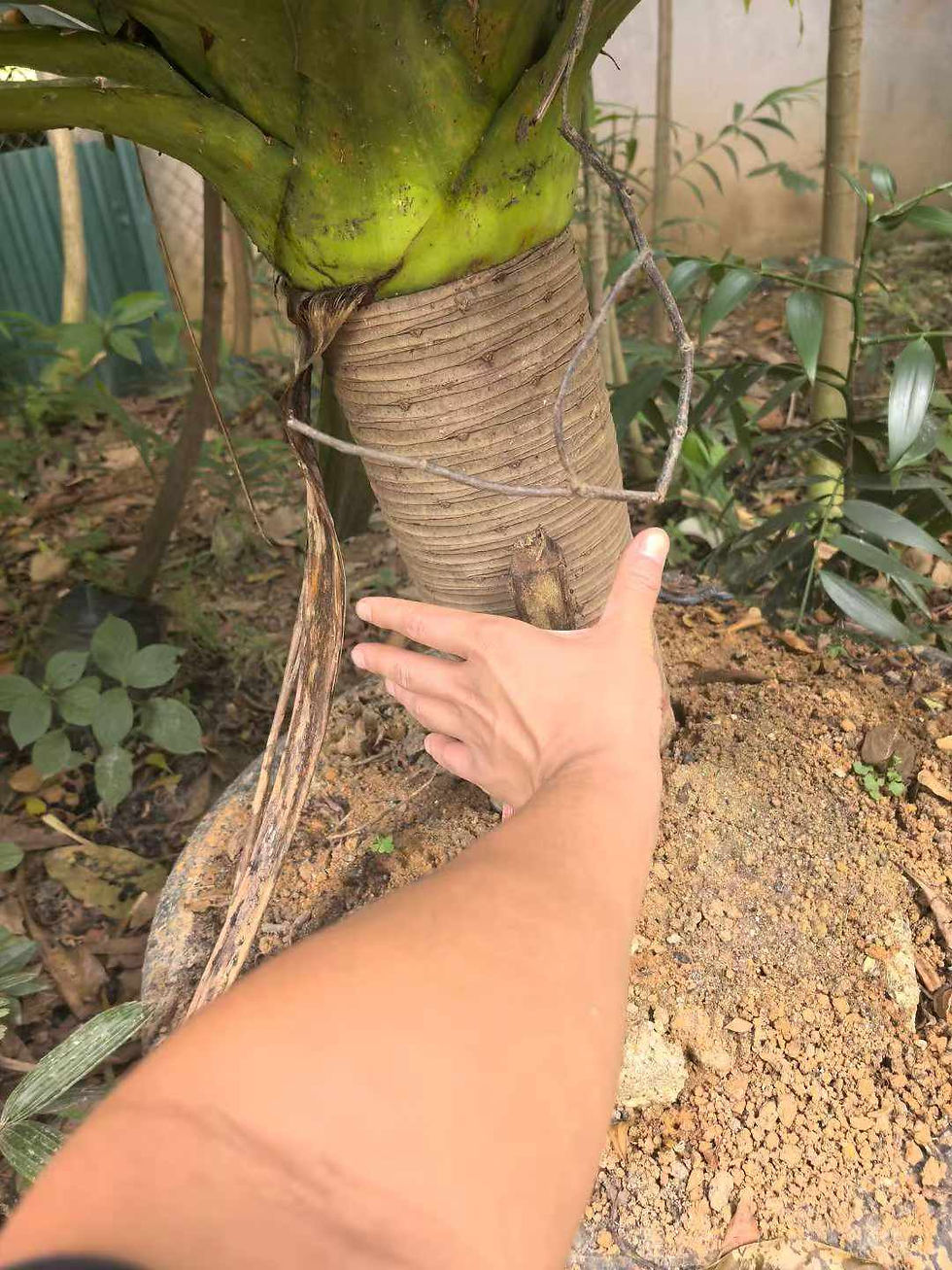Terminalia catappa / Sea Almond, Ketapang, Tropical Almond Tree / seeds
Seeding: Terminalia catappa, commonly known as Indian almond or tropical almond, begins its cultivation journey from seeds. The seeds should be collected from ripe fruits and cleaned thoroughly. They can then be sown directly into well-draining soil or started in nursery containers. Plant the seeds at a depth of about 1 inch and keep the soil consistently moist until germination occurs, which typically takes around 2-3 weeks.
Planting: Once the seedlings have developed several sets of true leaves and are strong enough for transplanting, they can be planted outdoors. Terminalia catappa thrives in tropical and subtropical climates with full sun exposure and well-drained soil. Planting should be done with spacing of approximately 20-30 feet between trees to allow for their spreading canopy. Regular watering, especially during the establishment phase, is crucial for promoting healthy root development and overall growth.
Medicinal Applications: Terminalia catappa has been utilized in traditional medicine systems for its various medicinal properties. Different parts of the tree, including the leaves, bark, and fruits, are used to prepare herbal remedies for ailments such as diarrhea, dysentery, inflammation, and skin conditions. The bioactive compounds present in Terminalia catappa, such as tannins and flavonoids, contribute to its pharmacological effects.
Scientific Research: Terminalia catappa is a subject of scientific research aimed at exploring its pharmacological properties and potential therapeutic applications. Studies have investigated its antioxidant, antimicrobial, anti-inflammatory, and antidiabetic properties. Researchers are also interested in elucidating the mechanisms of action of Terminalia catappa compounds and evaluating their efficacy in treating various diseases and disorders.
Textile Industry: The leaves of Terminalia catappa contain tannins, which have been traditionally used in textile dyeing processes. Extracts from the leaves can be used to dye natural fibers such as cotton, silk, and wool, producing shades of brown, red, and black. Terminalia catappa-based dyes are valued for their natural origin and ability to impart colorfastness to textiles.
Industrial Materials: Terminalia catappa wood is prized for its strength, durability, and attractive grain patterns, making it suitable for various industrial applications. The wood is used in furniture making, cabinetry, flooring, and boat building. Additionally, Terminalia catappa leaves are sometimes used as a renewable source of biomass for energy production and as natural mulch in agriculture and landscaping.
Landscaping and Greening Applications: Terminalia catappa is often utilized in landscaping and greening projects due to its ornamental value and ability to provide shade. The tree's spreading canopy and large, glossy leaves make it an attractive choice for parks, gardens, and urban green spaces. Its tolerance to a wide range of soil types and environmental conditions further enhances its suitability for landscaping purposes.
In summary, Terminalia catappa is a versatile tree species with diverse applications in medicine, scientific research, textile dyeing, industrial materials, and landscaping. Its cultivation and utilization offer numerous benefits, ranging from traditional healing remedies to sustainable resource management and beautification of outdoor spaces.
Details
Terminalia catappa, commonly called tropical almond or Indian almond, is a medium to large deciduous tropical tree that grows to 75-90' tall (often lower in cultivation) with a spreading crown featuring horizontal branching in tiers. It is primarily native to maritime areas of Asia, Polynesia and northern Australia, but is now grown in a number of additional tropical to subtropical areas around the world. Mature trees often present a handsome ornamental appearance. Trees feature (a) short, straight trunks (single or multiple) with dark scaly bark topped by horizontal branching, (b) leathery, broad-ovate, lustrous, dark green leaves which are spirally arranged in rosette-like clusters at the branch tips, (c) apetulous greenish-white flowers in axillary spikes, and (d) dry, egg-shaped, broad-ovate, one-seeded fruits with edible seed kernels which taste like almonds.Flowers bloom throughout the year, but more heavily in spring. Each flower spike (to 6" long) has male flowers near the tip and bisexual flowers near the base. Each flower has a tiny 5-lobed calyx with 10 stamens and 1 style. In some climates, leaf drop will occur two times per year (hence the designation of deciduous), but new leaves emerge quickly after old leaves drop (often only several days later). Leaves (6-12" long) turn an attractive red before dropping. Two-winged fruits (to 2" long) emerge green, then turn yellow before finally maturing to red. Inside the hard fibrous shell of each fruit is an edible, tasty, almond-like nut which resembles an almond in flavor, hence the common names of tropical almond or Indian almond for this tree. Commercial growth of this tree for nut production is minimal at this time in large part because of the small size of the nut kernels and the extraction difficulties.

































